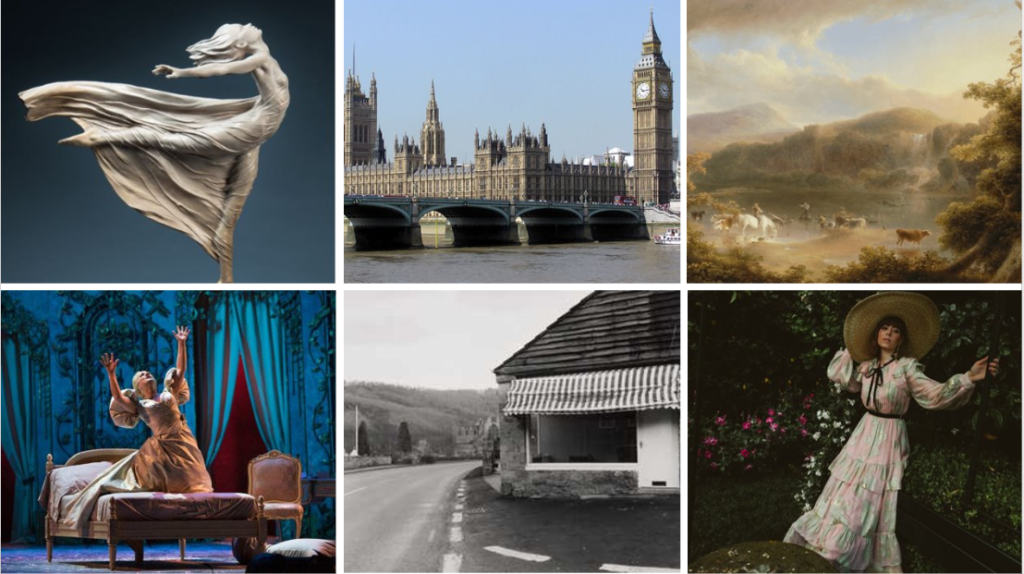Definition:
Romanticism, perspective or intellectual induction that was characterized in many works of literature painting, architecture, music, criticism and historiography in Western civilization over a period from the late 18th to the mid-19th century.
In landscape perspective it is typical “moody” in atmosphere; it is more about the subjective feelings of the artist, than an objective record of the observable world.
Examples: (referring to romanticism in other art forms)

Explanation: when an extradionary romantic era in landscape art , moved artists to capture nature and infusing it with emotion and drama. This pivotal period gave rise to a new form of artistic expression, one that sought to reveal the emotional depth and sublime beauty inherent in the world around us.
Definition of sublime and picturesque
Sublime: The sublime is the understanding of the quality of greatness or glory that stimulates awe and wonder. From the 17th century onwards the concept and the feelings it inspires have been a source of creativity for artists and writers, especially when it comes to the art of natural landscape.
Picturesque: an aware manipulation of Nature where it creates foregrounds, middle grounds, and backgrounds so that it can highlight a variety of provocative formal elements.
